Chrysler 2011 Annual Report Download - page 48
Download and view the complete annual report
Please find page 48 of the 2011 Chrysler annual report below. You can navigate through the pages in the report by either clicking on the pages listed below, or by using the keyword search tool below to find specific information within the annual report.-
 1
1 -
 2
2 -
 3
3 -
 4
4 -
 5
5 -
 6
6 -
 7
7 -
 8
8 -
 9
9 -
 10
10 -
 11
11 -
 12
12 -
 13
13 -
 14
14 -
 15
15 -
 16
16 -
 17
17 -
 18
18 -
 19
19 -
 20
20 -
 21
21 -
 22
22 -
 23
23 -
 24
24 -
 25
25 -
 26
26 -
 27
27 -
 28
28 -
 29
29 -
 30
30 -
 31
31 -
 32
32 -
 33
33 -
 34
34 -
 35
35 -
 36
36 -
 37
37 -
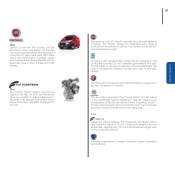 38
38 -
 39
39 -
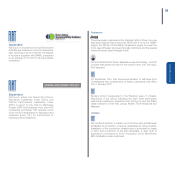 40
40 -
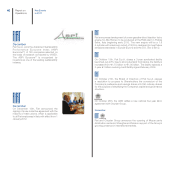 41
41 -
 42
42 -
 43
43 -
 44
44 -
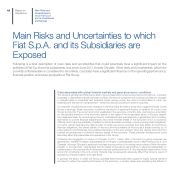 45
45 -
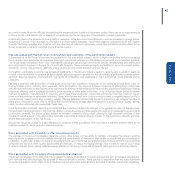 46
46 -
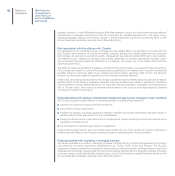 47
47 -
 48
48 -
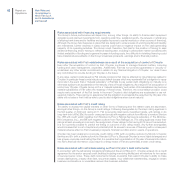 49
49 -
 50
50 -
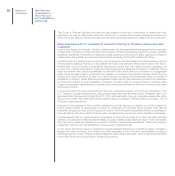 51
51 -
 52
52 -
 53
53 -
 54
54 -
 55
55 -
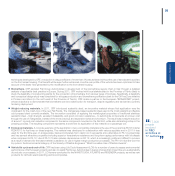 56
56 -
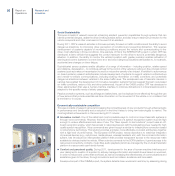 57
57 -
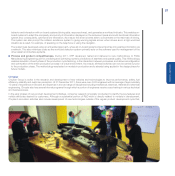 58
58 -
 59
59 -
 60
60 -
 61
61 -
 62
62 -
 63
63 -
 64
64 -
 65
65 -
 66
66 -
 67
67 -
 68
68 -
 69
69 -
 70
70 -
 71
71 -
 72
72 -
 73
73 -
 74
74 -
 75
75 -
 76
76 -
 77
77 -
 78
78 -
 79
79 -
 80
80 -
 81
81 -
 82
82 -
 83
83 -
 84
84 -
 85
85 -
 86
86 -
 87
87 -
 88
88 -
 89
89 -
 90
90 -
 91
91 -
 92
92 -
 93
93 -
 94
94 -
 95
95 -
 96
96 -
 97
97 -
 98
98 -
 99
99 -
 100
100 -
 101
101 -
 102
102 -
 103
103 -
 104
104 -
 105
105 -
 106
106 -
 107
107 -
 108
108 -
 109
109 -
 110
110 -
 111
111 -
 112
112 -
 113
113 -
 114
114 -
 115
115 -
 116
116 -
 117
117 -
 118
118 -
 119
119 -
 120
120 -
 121
121 -
 122
122 -
 123
123 -
 124
124 -
 125
125 -
 126
126 -
 127
127 -
 128
128 -
 129
129 -
 130
130 -
 131
131 -
 132
132 -
 133
133 -
 134
134 -
 135
135 -
 136
136 -
 137
137 -
 138
138 -
 139
139 -
 140
140 -
 141
141 -
 142
142 -
 143
143 -
 144
144 -
 145
145 -
 146
146 -
 147
147 -
 148
148 -
 149
149 -
 150
150 -
 151
151 -
 152
152 -
 153
153 -
 154
154 -
 155
155 -
 156
156 -
 157
157 -
 158
158 -
 159
159 -
 160
160 -
 161
161 -
 162
162 -
 163
163 -
 164
164 -
 165
165 -
 166
166 -
 167
167 -
 168
168 -
 169
169 -
 170
170 -
 171
171 -
 172
172 -
 173
173 -
 174
174 -
 175
175 -
 176
176 -
 177
177 -
 178
178 -
 179
179 -
 180
180 -
 181
181 -
 182
182 -
 183
183 -
 184
184 -
 185
185 -
 186
186 -
 187
187 -
 188
188 -
 189
189 -
 190
190 -
 191
191 -
 192
192 -
 193
193 -
 194
194 -
 195
195 -
 196
196 -
 197
197 -
 198
198 -
 199
199 -
 200
200 -
 201
201 -
 202
202 -
 203
203 -
 204
204 -
 205
205 -
 206
206 -
 207
207 -
 208
208 -
 209
209 -
 210
210 -
 211
211 -
 212
212 -
 213
213 -
 214
214 -
 215
215 -
 216
216 -
 217
217 -
 218
218 -
 219
219 -
 220
220 -
 221
221 -
 222
222 -
 223
223 -
 224
224 -
 225
225 -
 226
226 -
 227
227 -
 228
228 -
 229
229 -
 230
230 -
 231
231 -
 232
232 -
 233
233 -
 234
234 -
 235
235 -
 236
236 -
 237
237 -
 238
238 -
 239
239 -
 240
240 -
 241
241 -
 242
242 -
 243
243 -
 244
244 -
 245
245 -
 246
246 -
 247
247 -
 248
248 -
 249
249 -
 250
250 -
 251
251 -
 252
252 -
 253
253 -
 254
254 -
 255
255 -
 256
256 -
 257
257 -
 258
258 -
 259
259 -
 260
260 -
 261
261 -
 262
262 -
 263
263 -
 264
264 -
 265
265 -
 266
266 -
 267
267 -
 268
268 -
 269
269 -
 270
270 -
 271
271 -
 272
272 -
 273
273 -
 274
274 -
 275
275 -
 276
276 -
 277
277 -
 278
278 -
 279
279 -
 280
280 -
 281
281 -
 282
282 -
 283
283 -
 284
284 -
 285
285 -
 286
286 -
 287
287 -
 288
288 -
 289
289 -
 290
290 -
 291
291 -
 292
292 -
 293
293 -
 294
294 -
 295
295 -
 296
296 -
 297
297 -
 298
298 -
 299
299 -
 300
300 -
 301
301 -
 302
302 -
 303
303 -
 304
304 -
 305
305 -
 306
306 -
 307
307 -
 308
308 -
 309
309 -
 310
310 -
 311
311 -
 312
312 -
 313
313 -
 314
314 -
 315
315 -
 316
316 -
 317
317 -
 318
318 -
 319
319 -
 320
320 -
 321
321 -
 322
322 -
 323
323 -
 324
324 -
 325
325 -
 326
326 -
 327
327 -
 328
328 -
 329
329 -
 330
330 -
 331
331 -
 332
332 -
 333
333 -
 334
334 -
 335
335 -
 336
336 -
 337
337 -
 338
338 -
 339
339 -
 340
340 -
 341
341 -
 342
342 -
 343
343 -
 344
344 -
 345
345 -
 346
346 -
 347
347 -
 348
348 -
 349
349 -
 350
350 -
 351
351 -
 352
352 -
 353
353 -
 354
354 -
 355
355 -
 356
356 -
 357
357 -
 358
358 -
 359
359 -
 360
360 -
 361
361 -
 362
362 -
 363
363 -
 364
364 -
 365
365 -
 366
366 -
 367
367 -
 368
368 -
 369
369 -
 370
370 -
 371
371 -
 372
372 -
 373
373 -
 374
374 -
 375
375 -
 376
376 -
 377
377 -
 378
378 -
 379
379 -
 380
380 -
 381
381 -
 382
382 -
 383
383 -
 384
384 -
 385
385 -
 386
386 -
 387
387 -
 388
388 -
 389
389 -
 390
390 -
 391
391 -
 392
392 -
 393
393 -
 394
394 -
 395
395 -
 396
396 -
 397
397 -
 398
398 -
 399
399 -
 400
400 -
 401
401 -
 402
402
 |
 |

47
Risks associated with relationships with employees and suppliers
In many countries where the Group operates, Group employees are protected by various laws and/or collective labor agreements
that guarantee them, through local and national representatives, the right of consultation on specific matters, including downsizing
or closure of production units and reductions in personnel. The laws and/or collective labor agreements applicable to the Group
could impair its flexibility in reshaping and/or strategically repositioning its business activities. The Group’s ability to reduce personnel
or implement other permanent or temporary redundancy measures may be subject to government approvals and the agreement of
the labor unions. Industrial action by employees could have an adverse impact on the Group’s business activities.
Furthermore, the Group purchases raw materials and components from a large number of suppliers and relies on services and
products provided by companies outside the Group. Some of these companies are highly unionized. Close collaboration between a
manufacturer and its suppliers is common in the industries in which the Group operates and although this offers economic benefits
in terms of cost reduction, it also means that the Group is reliant on its suppliers and is exposed to the possibility that difficulties,
including those of a financial nature, experienced by those suppliers (whether caused by internal or external factors) could have a
material adverse effect on the Group’s business prospects, earnings and/or financial position.
Risk associated with increase in costs, disruption of supply or shortage of raw materials
Fiat uses a variety of raw materials in its business including steel, aluminum, lead, resin and copper, and precious metals such as
platinum, palladium and rhodium. The prices for these raw materials fluctuate and at times in recent periods, these commodity
prices have increased significantly in response to changing market conditions. Fiat seeks to manage this exposure, but it may not
be successful in hedging these risks. Substantial increases in the prices for raw materials would increase the Group’s operating
costs and could reduce profitability if the increased costs will not be offset by changes in vehicle prices. In addition, certain raw
materials are sourced only from a limited number of suppliers and from a limited number of countries. The Group cannot guarantee
that it will be able to maintain arrangements with these suppliers that assure access to these raw materials, and in some cases this
access may be affected by factors outside of Group’s control and the control of its suppliers. For instance, the recent earthquake
and tsunami in Japan have negatively affected commodity markets, and any similar event may have severe and unpredictable effects
on the price of certain raw materials in the future. As with raw materials, the Group is also at risk for supply disruption and shortages
in parts and components for use in its vehicles.
Any interruption in the supply or any increase in the cost of raw materials, parts and components could negatively impact Group’s
ability to achieve growth in vehicle sales and improved profitability.
Risks associated with environmental and other government regulation
The Group’s products and activities are subject to numerous environmental laws and regulations (local, national and international)
which are becoming increasingly stringent in many countries in which it operates (particularly in the European Union). Such regulations
govern, among other things, products – with requirements relating to emissions of polluting gases, reduced fuel consumption and
safety becoming increasingly strict – and industrial plants – with requirements for emissions, treatment of waste and water and
prohibitions on soil contamination. In order to comply with such laws and regulations, the Group employs considerable resources
and expects it will continue to incur substantial costs in the future.
In addition, government initiatives to stimulate consumer demand for products sold by the Group, such as changes in tax treatment
or purchase incentives for new vehicles, can substantially influence the timing and level of revenues. The size and duration of such
government measures are unpredictable and outside of the Group’s control. Any adverse change in government policy relating to
those measures could have material adverse effects on the Group’s business prospects, earnings and/or financial position.
Risks associated with management
The Group’s success is largely dependent on the ability of its senior executives and other members of management to effectively
manage the Group and individual areas of business. The loss of any senior executive, manager or other key employees without an
adequate replacement or the inability to attract, retain and incentivize senior executive managers, other key employees or new qualified
personnel could therefore have a material adverse effect on the Group’s business prospects, earnings and/or financial position.
Report on Operations
